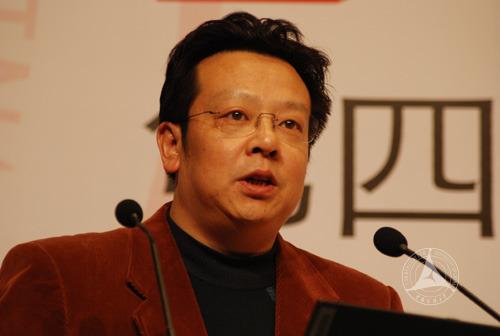
Good afternoon, everyone! I am very glad to be here. This university is one of the most famous universities in the world. I have been to this country for many times , but I did not have chance to be here. So today I am very pleased to visit the university.
There are 2 reasons why I would like to talk about this topic. The first is that from the perspective of media development, Chinese media is unique, and it takes a different path from media in other countries; therefore, we can study the media and better understand different paths of world's media development as well. The second reason is that from the perspective of China itself, Chinese media has important influence on China's politics, society and culture ; therefore, we can have deeper understanding about China.
It is impossible talk into every detail about the 60 years' development of Chinese TV, so I picked out some stories, phenomenon and landscape to express my thoughts on Chinese TV's past, present and future.
I divided these 60 years into 3 periods, each 20 years in each period. The first period is from 1958 to 1978, the second is 1978-1998, the third is 1990 to present. And each period shows its time feature in terms of content production. Namely, the first period is dominated by "propaganda materials", the second one is dominated by "works", and the third one was dominated by "products". The so-called "propaganda materials" refer to the TV contents based on ideology, "works" refer to TV contents based on professionalism, "products" refer to TV contents driven by the market. So let's taste the evolution of the 3 types of contents.
1.First period (1958-1978) dominated by propaganda materials
In 1958, China was recovering from The Korean War, and finished its socialist transformation on capitalist industry and commerce. Though China was still in poverty, compared to the days in 1949 when we just finished our civil war, it has been much better. In that relatively enclosed environment, leaders of China started to fancy about "catching up with UK and US" and achieve communism, so "Great Leap Forward" became the catchword and characteristic of those years. Then television programs stared to appear in China.
Mr. Zhao Zhongxiang was the first male announcer in China, also the most influential announcer and host in the history of China's television. He was still a senior in high school when he was selected among Beijing students. At that time, there were just 300 TVs in China, so his family couldn't understand what the boy was doing, and they though he was engaged in confidential works.
Mr. Chen Hanyuan was one of the earliest TV documentary producers. He was temporarily transferred to Beijing TV station, the same TV station that Mr. Zhao Zhongxiang worked in, and also the only TV station in China at that time. In 1978, Beijing TV station was changed to China Central Television. When his family asked him about what Beijing TV station was, he initially thought this was a power plant.
China's television industry started like this, without enough professionals.
The television content was mostly based on the requirements of China Communist Party, and programs mainly served for the central mission of that time.
The Tenth National Day Live showed China Communist Party's power and nation's prosperity
A Bite of Vegetable Cake was the first teleplay in China. It described the miserable experience an elder sister shared with the younger ones that their mother got a bite of vegetable cake and left the cake to children, then died herself. This teleplay echoed with the education of "recalling sufferings of the old society".
Rent Collecting Yard was the most influential documentary of the first period. It fit the Class Struggle education and triggered new generation's hostility on landlord class by telling the story of landlord Liu Wencai who cruelly exploited and prosecuted local peasants. The commentary of this documentary was also included into Chinese textbooks; therefore, it influenced several generations afterwards.
China was going through Cultural Revolution during those years, so China's television was mostly influenced by left-wing trend. There was strong educational signs on the promotion of propaganda materials. From the perspective of form, we can see that Chinese television was imitating other media and art which had longer history, such as imitation of newsreel on shooting, imitation of broadcast on reporting, imitation of news agency on the classification of form, imitation of newspaper on text comments. Overall, Chinese television had not formed its own media and art characteristics. (PICTURE)



 回到顶部
回到顶部